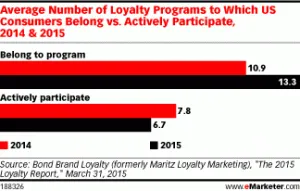How to Boost Your Loyalty Program Participation Rate
The average consumer belongs to 13.4 loyalty programs, but is only active in 6.7.
– Bond Brand Loyalty
While many brands can convince customers to enroll in a rewards program, not all do enough to maintain active participation.
Customers abandon loyalty programs for many reasons, whether they forget they’re enrolled, don’t see enough value, or find it too complicated.
Companies often hurt their program participation rates without even knowing it, or launch a program and expect engagement to flourish. But unless you’re making a consistent effort to both attract AND engage customers in your loyalty program, you’ll miss opportunities to optimize your revenue.
This leaves us with the need to answer two questions:
- How do I attract members to join my loyalty program?
- How do I make sure they stay engaged and participate?
When more program engagement means more sales, more referrals, and ultimately more revenue, it’s one of the most important metrics you can improve.
How do you know if your loyalty program is engaging?
The first step in improving program engagement is understanding your baseline. What is your participation rate today, and by how much do you want to improve it going forward? As Peter Drucker puts it:
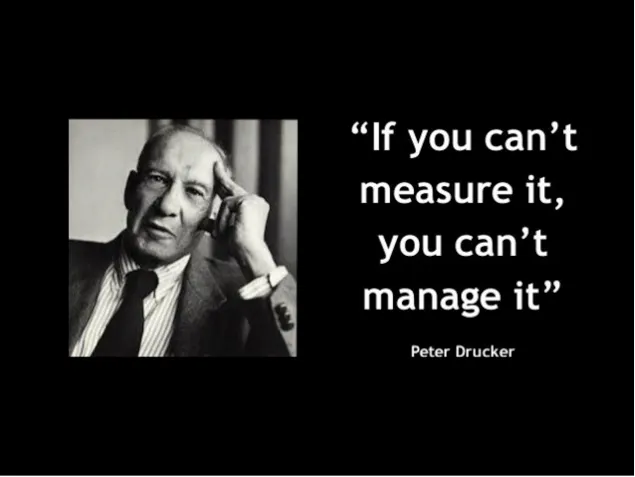
The simple calculation for participation rate looks like this:
Participation Rate = Active Members / Total Number of Customers
- Active loyalty program members: The number of customers who have directly engaged with some aspect of your loyalty program (ie. signed up, earned a reward, etc).
- Total customers: The total number of customers you have.
It’s important to remember that participation rate is not the same as enrolment rate.
As we mentioned earlier, many customers will sign up for a program but fail to engage with it, making your enrolment rate much higher than your participation rate and not indicative of customers gaining any value.
Your reward program’s participation rate indicates whether your program is easy to find, simple to join, and attractive to engage with. If customers are not participating, it becomes much more difficult to build a loyal customer base.
For further insight as to whether your rewards program is working, check out this article for three more important metrics to track.
How do you improve your participation rate?
Boosting program participation has two crucial components:
How do you get customers to join your loyalty program?
1 – Clearly explain your program
Whether it’s in an email, in a social media post, or on a page on your website, the structure of your loyalty program must be easily digestible, which also increases its shareability.
For example, customers are familiar with points programs, and understand that companies will establish their own points-to-dollar value. But adding extra conditions and exceptions that require a customer to read the fine print every time will only deter potential users.
One of the best ways to clearly explain your loyalty program is through a dedicated explainer page on your website. As the one-stop-shop for information about your program, customers should be able to quickly understand what’s in it for them, how they join, and how they participate.
Here’s a great explainer page of a referral program from online mattress company Endy. It clearly outlines the three-step process that takes place for the customer to receive a $55 gift card reward for each successful referral.
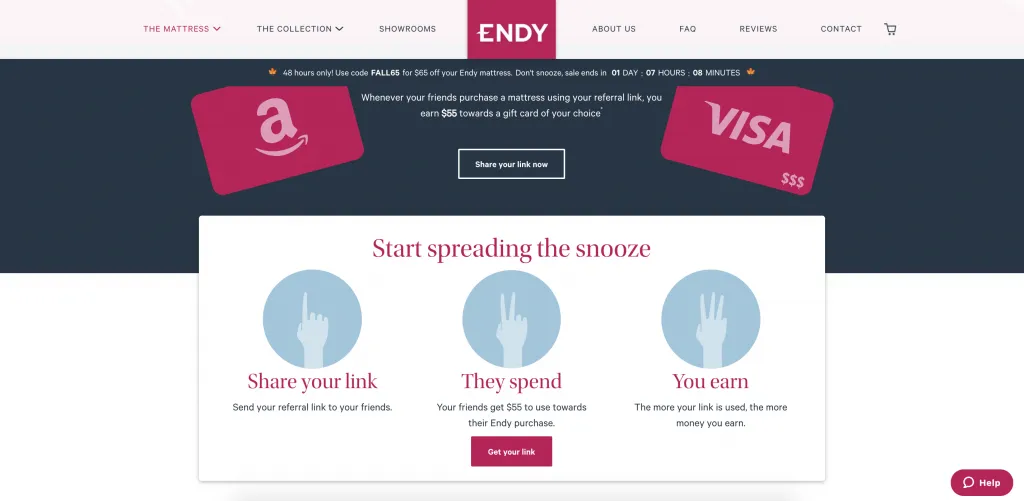
2 – Don’t ask for too much personal information
The next step to increasing program enrolment is making it simple and safe to join.
When was the last time you started filling out an online form, reached the field requiring your phone number (or other personal data field), and decided it wasn’t worth it and closed the page?
If you do need to collect non-standard information from customers, make sure you indicate why and what it will be used for.
The 2019 Bond Loyalty Report highlights an increasing customer expectation that user data should be used to create a much more personalized experience. There is still room for improvement here given that 96% of programs collect first names but only 57% actually use them.
Every piece of information you collect during program enrolment should be used to improve the customer’s experience. If you collect their address, offer location-specific incentives. If you collect birthdates, offer a yearly birthday reward.
3 – Maintain a consistent promotion strategy
Basic loyalty program promotion is something that even Airbnb didn’t succeed at the first time around. It’s dangerous to assume that simply having a rewards program is enough to attract customers.
With so many competing messages on the internet, customers will only engage with what they can see.
A wide array of channels can be leveraged to promote your loyalty program, including your website, social media channels, emails, invoices and product pages. Using on-site cues is one of the most simple and effective ways to introduce every customer to your offerings and invite them to learn more:
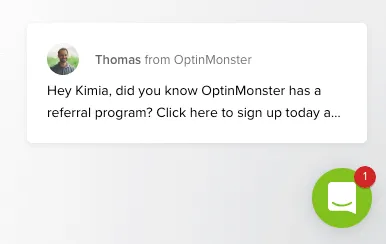
Promoting your program also means getting your whole team on board to engage users at every touchpoint. In a B2C environment, support team members can promote the benefits after solving a customer issue. In a B2B scenario, account managers can explain available rewards during each client check-in.
Not sure where to start with your promotion strategy? Download our checklist to make sure you don’t miss an opportunity to attract new members.
4 – Offer an incentive for joining
It’s common for brands to offer a welcome incentive to new loyalty program members.
Based on what we know from human psychology, giving customers a head start towards a goal (ie. “make 5 purchases”) makes them much more likely to actually complete the goal.
One study proved this at a car wash that offered stamp cards, giving customers one stamp after each visit. Once all stamps were collected, the customer received a free car wash.
The first group of customers received a stamp card with eight empty slots, and the second group received a card with ten slots, two of which were already stamped.
The group of customers with the two-stamp “head start” were much more likely to reach their goal and return 8 more times to redeem the free car wash. Redemption of the free car was was 34% for this group, compared to 19% for the customers who started with a blank stamp card.
When you help customers earn a reward more quickly, the sooner they’ll realize the value of joining your program and continue their participation.
How do you get customers to engage with your loyalty program?
Many brands assume that once a customer is enrolled in the rewards program, participation is a no-brainer. In reality, engagement is a combination of reminding customers why they signed up, and giving them a good reason to keep participating.
Put another way, what can you do to prevent people from abandoning your loyalty program?
1 – Offer more ways to earn rewards
A loyalty program is meant to establish a win-win relationship between a business and its customers: Your customers receive value through rewards, and you receive their repeat business.
Because reciprocity is built into us, the more often a customer receives rewards, the more often they’ll be inclined to return the favor with repeat business. This means rewarding frequent profitable customer actions, even if it’s not a monetary transaction.
For example, reward customers for:
- Downloading your app
- Leaving a review
- Following you on social media
- Referring a friend
- Trying a new feature
In a 2017 survey, the top reason for loyalty program abandonment was that it took too long to earn rewards – an answer given by 57% of respondents.
If the only reward you offer is to customers who spend $300 in one month, customers may feel that you’re just waiting around for them to spend money instead of trying building a relationship. Learn how to reward users at every stage of the lifecycle with this guide.
2 – Send regular reminders and communications
Making your program easy to understand doesn’t stop once a customer has enrolled. Whether you do this by email, in-app notifications, push notifications or SMS, users need to know:
- How/where to find their reward balance
- What their rewards mean (ie. their reward value)
- How to redeem rewards
- What to do next
If a program member doesn’t know what their status is or where they can find it, they won’t bother trying to collect or redeem anything. This becomes an even bigger problem if your rewards have expiration conditions. Expiring a customers’ rewards without sufficient reminders is a surefire way to lower your brand image.
However, there is such a thing as “too much” communication. The Colloquy 2017 Loyalty consensus report found that receiving too many communications was a put off for 38% of customers who abandoned a program. In addition, 36% of members will abandon a program if the communications are irrelevant to them.
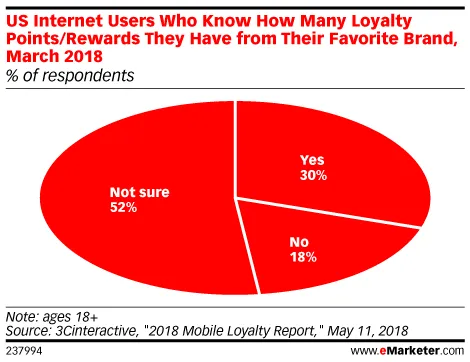
Ensure each communication has a purpose, adds value, and is relevant to the recipient.
3 – Deliver increased personalization
A large component of boosting participation involves personalizing each customer interaction as much as possible.
Recent data tells us that customers believe “offer[ing] personalized rewards” is the top thing that a loyalty program should be doing for them. While this doesn’t have to mean physically engraving customer names into every reward, it can start with giving customers a choice of rewards instead of subjecting everyone to the same generic coupon.

What’s more, 68% of customers will leave a business relationship if they feel like the brand is indifferent to them, and your rewards program is no exception. More than half of consumers (56%) say that they are more loyal to brands who show an understanding of their priorities and preferences, which highlights the importance of using all customer data to your advantage.
For example, a meal-kit delivery service may send a special offer to vegetarian customers, or a digital banking app will incentivize customers to leave a review one year after opening an account.
If you don’t have enough user data right now, don’t complicate the signup process. Instead, set up a campaign to rewards users for filling out their profile.
Wrapping it up
Once you’ve launched a loyalty program, don’t miss out on opportunities to keeping engaging customers and drive more loyal behavior. Customer enrolment in your program is only the beginning – a profitable relationship must deliver on the expectations of the modern customer.
To learn more about designing a successful loyalty strategy in the digital economy, sign up for the Digital Loyalty Academy today for free!
